The Network Effect: Here's Why Bitcoin Is Going Much Higher
Victor Dergunov
Summary
- Bitcoin looks like it's building a base around the $6K level, and prices are not likely to go much lower from here.
- Market participants are preoccupied with the approval of Bitcoin ETFs, but longer term Bitcoin is likely going much higher regardless.
- How much was Facebook worth when it only had 28 million users? How much was the internet worth in 1995 when 0.4% of the population was online?
- There are fewer than 28 million blockchain wallets right now, but how much will Bitcoin be worth when 280 million or 2.8 billion people start using cryptocurrencies?
- The network effect is an extremely powerful dynamic that could lead to substantially higher market share for the cryptocurrency complex and much higher prices for Bitcoin.
- Market participants are preoccupied with the approval of Bitcoin ETFs, but longer term Bitcoin is likely going much higher regardless.
- How much was Facebook worth when it only had 28 million users? How much was the internet worth in 1995 when 0.4% of the population was online?
- There are fewer than 28 million blockchain wallets right now, but how much will Bitcoin be worth when 280 million or 2.8 billion people start using cryptocurrencies?
- The network effect is an extremely powerful dynamic that could lead to substantially higher market share for the cryptocurrency complex and much higher prices for Bitcoin.
Bitcoin (BTC-USD) (COIN) has been in a bear market for about eight months now. Ever since the price peaked at nearly $20,000 in December Bitcoin has been in a downward spiral, and has dropped by roughly 70% from peak to trough.
Bitcoin: 1-Year Chart
Source: BitcoinCharts.com
Nevertheless, Bitcoin is showing signs of stabilization, and has successfully defended the $6K level on four separate occasions. The cryptocurrency is seemingly building a base around the $6,000 level, and its price is unlikely to go much lower from here. In addition, Bitcoin’s network effect coupled with other elements should drive its price significantly higher over the long term.
The Bitcoin bear market will likely conclude relatively soon, which makes this a good time to add to positions in Bitcoin as well as in other systemically important digital coins.
Bitcoin Fails, Once Again
For now, the Bitcoin bear market continues as the cryptocurrency failed to break out in late July. This is not unusual though, as we’ve seen prolonged declines in Bitcoin before. The current rout closely resembles the early to mid-stages of Bitcoin’s prior bear market that lasted around a year and a half, and saw prices drop by approximately 80% from peak to trough before the recovery began.
Bitcoin: Seven-Year Chart (logarithmic)
If we go back further we see that Bitcoin had a similar percentage drop in the 2013 bear market, where its price fell by roughly 75% from peak to trough. So, as we observe the history of Bitcoin’s bear markets we see that on average Bitcoin deflates by about 70-80% from peak to trough in such periods.
This leaves us with essentially three levels to look at for a possible bottom in Bitcoin’s price. The first is the 70% retracement from the roughly $19,500 top in December, which already brought Bitcoin down to the $5,850 level. The next point is a 75% decline, which would bring prices down to about the $5,000, and what appears to be a worst-case scenario, an 80% decline which would bring Bitcoin all the way down to $4,000. The $4-5K area also represents the next level of solid support from a technical perspective.
So, the good news is that Bitcoin already has hit the first area of significant support, the 70% retracement, the $5.85K level. Therefore, it's possible that Bitcoin is forming a sustainable long-term bottom around the $6K level right now, and may not see new lows from here. However, almost anything is possible in the world of Bitcoin, so it's also possible that some future news or developments cause the digital asset to drift slightly lower.
Looking at all the available variables I give it about a 50% probability that the Bitcoin bottom is in, about a 30% probability that Bitcoin retraces back down to the $5K level, a 15% likelihood that Bitcoin goes all the way down to test the $4K level, and about a 5% possibility that Bitcoin could go lower than $4K.
Why Bitcoin is Not Likely to Fall Much Further
Why Bitcoin is Not Likely to Fall Much Further
While it’s good practice to prepare for all types of possible outcomes when you are dealing with a relatively new, unprecedented, and somewhat unpredictable phenomenon like Bitcoin, there are several key reasons why Bitcoin is not likely to fall much further from here.
The first factor is the mining costs. There are many factors that give Bitcoin its value - its potential as a digital global currency, its store of value attributes, its limited supply, its worldwide multibillion-dollar infrastructure, as well as numerous other elements. However, one of the key factors that makes Bitcoin valuable is that it's quite expensive to mine.
The cost of mining Bitcoin varies greatly by country, from an incredibly low $531 in Venezuela to an astronomically high $26,170 in South Korea. However, most of the countries where Bitcoin is widely mined like Russia, Iceland, the U.S., and other nations typically have mining costs in the $4,500-5,000 area. This infers that Bitcoin likely has a mining cost of around $4,800 on average.
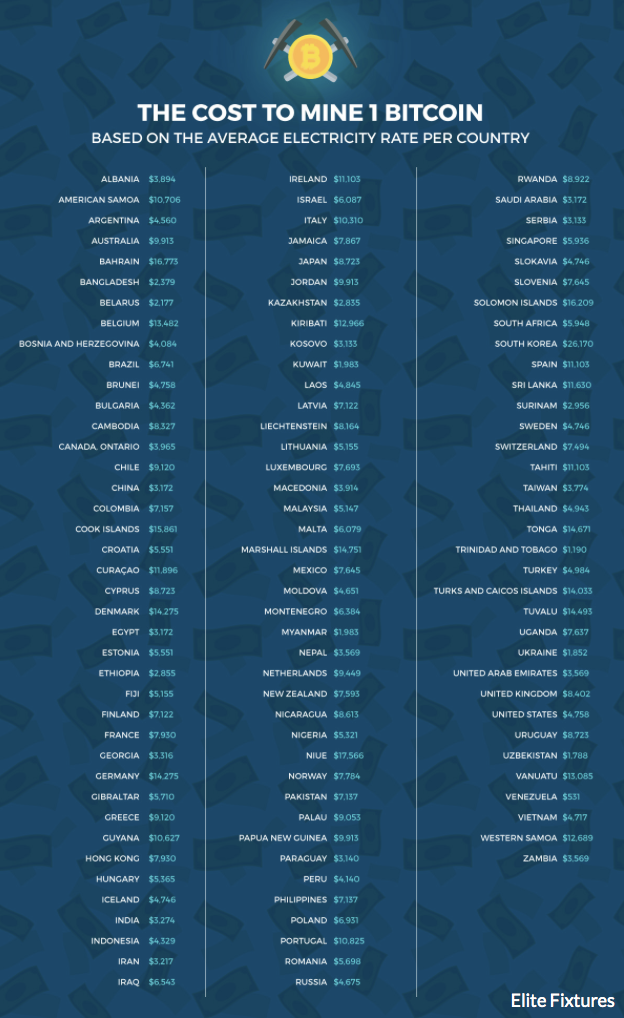
Source: MarketWatch.com
Moreover, the cost of mining Bitcoin will likely only increase with time, because as fewer Bitcoin’s are left to mine, they become increasingly more difficult to derive. The current global energy usage required to mine Bitcoin is estimated to equate to the amount of power used by a modest sized country like the Czech Republic with a population of about 10 million people.
However, eventually the mining requirements are estimated to approach roughly 16 times that.
This implies that eventually we could be looking at an average mining cost of about $76,000 per Bitcoin.
Source: Digiconomist.net
The $4,800 approximate mining cost per Bitcoin, or breakeven cost, also coincides closely with the 75% retracement level, and prices are not likely to fall below this point. The primary reason is because at around this level many Bitcoin miners will be forced to suspend operations, which would constrain supply. A disruption in the supply of newly minted Bitcoins would likely produce an imbalance in the supply demand dynamic, which would likely cause the price of Bitcoin to rise. Also, approaching a breakeven cost in any commodity, not just Bitcoin historically signals that a bottom is likely near.
So, What Caused the Recent Wave of Selling?
Bitcoin was making a solid run at the $8.5K key resistance level in late July, until the SEC rejected the Winklevoss twins Bitcoin ETF, again. Their idea was shot down in a 3-1 vote by the commission, and Bitcoin’s price began to roll over immediately. In the following two-week period Bitcoin shed nearly 30% of its value, before bouncing off the $6K support in recent days.
Bitcoin: Six-Month Chart (logarithmic)
The SEC cited concerns regarding fraudulent activity, and manipulation, due to the vast majority of Bitcoin activity taking place in unregulated offshore markets. The SEC noted that more than 75% of all the volume in Bitcoin occurs outside the U.S. and about 95% of the volume occurs on non-U.S. exchanges. In addition, the bid-ask spreads vary widely across exchanges, and Bitcoin futures volume is relatively small, just about 2.5% of silver.
Another event that exacerbated the recent selloff was the SEC’s verdict to postpone a decision about approving another Bitcoin ETF, this time brought forth by VanEck and SolidX. VanEck is a formidably asset management firm with nearly $50 billion under management, and runs some of the most popular ETFs in the world, including popular gold mining ETFs (GDX), (GDXJ), oil services ETF (OIH), and many more. All together the company manages more than 50 ETFs and it wants to get into the Bitcoin business. Its proposed ETF would be backed by actual Bitcoin rather than futures.
It’s one thing for the Winklevoss twins to try and push through a Bitcoin ETF, but it’s another thing for a prominent New York-based asset management house to request ETF hearings. Furthermore, VanEck and the Winklevoss brothers are just the beginning, as there are other applications for Bitcoin ETFs, and it's likely only a matter of time until they start getting approved.
In fact, there are a total of 10 proposed Bitcoin ETFs being looked over by the SEC in the next two months alone, including ETF proposals from industry heavyweights like ProShares, Direxion, and others. The decision for the VanEck proposal has been pushed out to September 30, so mark this day on your colander because it's going to be a big day for Bitcoin one way or the other.
Does Bitcoin Even Need an ETF?
Does Bitcoin Even Need an ETF?
The appeal of a true Bitcoin ETF has been around for some time. There's the Bitcoin Investment Trust (OTCQX:GBTC) by Grayscale, the only current Bitcoin ETF type product in the U.S. However, GBTC trades on the OTC market and does not trade on a major exchange.
In addition, GBTC trades at a significant premium to Bitcoin, sometimes by as much as 100%.
In addition, GBTC trades at a significant premium to Bitcoin, sometimes by as much as 100%.
GBTC: One-Year Chart
We see that a premium of roughly 33% is being paid right now to own GBTC, and the premium was as high as roughly 100% in late December. Also, we can see that the price does not track Bitcoin all that well. GBTC is now substantially lower than where it was at the February bottom, whereas Bitcoin is above the price.
The introduction of “real” ETFs should propel Bitcoin further into the mainstream, and should allow for substantially more Bitcoin exposure to institutional and retail investors. This will likely improve Bitcoin’s overall popularity, and should result in significantly higher prices.
Nevertheless, Bitcoin's success does not rely on its ETFs being approved, instead it will simply help the digital asset gain wider acceptance faster, but the digital asset should continue to do well regardless.
The Network Effect
Nevertheless, Bitcoin's success does not rely on its ETFs being approved, instead it will simply help the digital asset gain wider acceptance faster, but the digital asset should continue to do well regardless.
The Network Effect
Independent of Bitcoin ETFs and futures contracts the raw commodity continues to gather momentum as more and more blockchain wallets are being created. It's also important to reinforce the fact that at the heart of Bitcoin is blockchain, and the market that takes place on the countless exchanges worldwide dealing in the raw commodity, not the futures, or the ETF market. These are more secondary elements beneficial to propelling Bitcoin into the mainstream, but Bitcoin should do just fine in the long term, independent of these factors.
There are currently about 27.86 million blockchain wallets in the world, these are essentially spots on a network (various networks to be exact) that can trade, store value, and make purchases with Bitcoin and other digital assets. In about one week this number should rise to 28 million. This is just seven weeks after the number of Blockchain wallets crossed 26 million on July 7. This shows a clear acceleration in the wallet creation trend, as it took more than 12 weeks to get from 24 million to 26 million wallets. And the prior period which brought the number of blockchain wallets from 22 million to 24 million also took about 12 weeks.
Number of Blockchain Wallets Around the World
Source: Blockchain.com
To see such robust creation as we’ve witnessed in the past two months we must look back to the hyper growth era of late last year. So, essentially we are beginning to see signs of increased interest and reacceleration in the participation on the cryptocurrency network once again.
To get a glimpse into how early in the Bitcoin cycle the world is in right now, let’s try to put the 28 million number into some perspective. The current world population is about 7.6 billion, and roughly 55% of the world’s population currently enjoy internet access. This puts the number of people currently using the internet at about 4.2 billion. It's also important to note that the world’s population is perpetually expanding along with the percentage of internet users. So we can expect continual growth to resume for now.
Source: InterentWorldStats.com
28 million blockchain wallets represent only 0.66%, or just two-thirds of 1% of the world’s populous on the internet. If we use the overall population of the world, only about 0.37% of the earth’s inhabitants have a blockchain wallet right now. This number is likely substantially lower if you factor in numerous different cryptocurrency wallets per some users.
My estimates are that only about 0.5% of Internet users, and roughly 0.25% of the world’s population, have blockchain accounts. This is essentially the same as saying that Bitcoin and all other digital assets combined have achieved a penetration rate of fewer than 0.5% so far.
Let’s look at this from a social networking standpoint. How much was Facebook (FB) worth when it had 28 million users on its network? A few hundred million? Maybe a billion dollars?
And how much is Facebook worth now? $500 billion.
And how much is Facebook worth now? $500 billion.
Why stop at Facebook, let’s look at the internet in general, because a comparison of one revolutionary technology warrants a comparison to another similar phenomenon. How much was the internet worth in 1995 when it had only 16 million users, or roughly 0.4% of the world’s population online?
Remember, things were primitive back then, just some pictures, rudimentary functions, and limited information. No Google (GOOG) (GOOGL), Netflix (NFLX), or Amazon (AMZN). So, perhaps the internet was valued at $50 billion, or $100 billion, or $500 billion maybe. Now we have multiple companies worth more than $500 billion, the internet is effectively invaluable, worth 10s of trillions of dollars, and most people can’t imagine life without it.
It’s the same thing with digital assets, Bitcoin was worth very little initially. It was worth about 6 cents when it first began trading in 2010. This was when only a few people knew about it and began trading Bitcoin back and forth. This is like a point when a few people began using Facebook at Harvard, or when a handful of people began sending emails to each other decades ago. These technologies also were relatively “worthless” at their inception points. But then more people begin using it, and the price moves up from 6 cents to $6, to $60, to $600, and now that there are roughly 28 million blockchain wallets and millions of people using, trading, and storing value in Bitcoin it is worth around $6,000. So, the million-dollar question is how much will Bitcoin be worth when 280 million are using it, and then 2.8 billion begin to use it?
So, Why Use Bitcoin at All, You Ask?
So, Why Use Bitcoin at All, You Ask?
Fair question, but the simplest and shortest answer is because it's the future. Bitcoin, Bitcoin Cash (BCH-USD), Litecoin (LTC-USD), Ripple (XRP-USD), and other blockchain-based systemically important coins are examples of a new, optimal system and technology. The “old system/technology” in this case is the current parasitic and highly inefficient fiat monetary system.
If I want to send $10,000 to someone, or to myself in another country, I need to be physically present at my bank, to fill out paper work, confirm my identity, and jump through various other hoops just to gain access to my own money. This is highly inconvenient, and sometimes impossible, as I recently learned trying to process a wire transfer while traveling overseas.
Also, a deposit, transfer, or a withdrawal of just $10,000 or more could sound off alarm bells at the Fed, the IRS, or your banking institution. This could result in an audit, your account being frozen, or suspended, or in a series of other unpleasant consequences due to the presence of redundant, predatory third parties. It's also important to mention that in today’s world $10K is not an incredibly large sum of money, so just imagine what kind of hassle you would need to put up with to transfer, deposit, or withdraw $100,000, $1 million, or more.
In addition, you are going to have to pay all types of transfer, transaction, and foreign exchange charges. And, you will likely have to wait quite a bit of time for the transaction to get approved, processed, and made available to you in the form of money. It will likely take several days for the money to arrive to another country’s bank account, and a Western Union, or a comparable service transaction could take even longer.
Most people have restrictive access to their own money, must pay extensive fees on a constant basis, and are continuously confronted with perpetual devaluation phenomenon known as inflation. This is all due to the nature of the “old system/technology” (current fiat monetary order). The current fiat based monetary system very much resembles a control grid, where the primary third parties, the government, central banks, and commercial banks act largely as redundant patristic forces, always monitoring, controlling, and heavily taxing every financial move that you make.
With Bitcoin and blockchain (the new technology), you get to completely bypass the overwhelming majority of these unpleasant issues. Bitcoin and other systemically important coins are decentralized, meaning that the parasitic and predatory third parties are essentially removed from the equation all together.
I can send Bitcoin, Litecoin, Bitcoin Cash, Ethereum (ETH-USD), etc., from any geographic location, to anywhere in the world, in minutes, with very little cost, and absolutely no hassle. A recent Bitcoin transaction from an exchange to a cold wallet cost about $6. But Bitcoin is expensive relative to other prominent currencies. Similar transactions in Litecoin and Bitcoin Cash cost a fraction of the $6 cost and are delivered within minutes. Transaction costs vary, depending on various factors, but in general they are far cheaper, faster, and are much more convenient than trying to send money from one bank to another, especially if it's done internationally.
In addition, you are not limited with regard to how much you can send. You can just as easily send $1 worth of Bitcoin, or $1,000,000. Bitcoin, can’t get inflated away by a central banking system as there are a set number of Bitcoins that can ever be mined, only 21 million. Whereas the continuously expanding money supply in the fiat monetary system creates perpetual inflation, which leads to the constant devaluation of a fiat money.
With digital assets, you essentially have complete control over your own currency and store of value assets. Bitcoin has no risk of disappearing or being stolen if you know how to store it properly (cold wallet works best). There's no central authoritarian figure looking over your shoulder dictating how much you can send, or with whom you can conduct commerce with. And you remain immune from the heavy taxing conducted by commercial banking institutions for letting you use your own money.
Clearly Bitcoin represents a superior system, and as a rule of thumb it's only a matter of time until a superior technology takes over the market share of an existing inferior system or a technology.
This is Going to Be a Big, Big Market
This is Going to Be a Big, Big Market
Currently, the fiat monetary system dominates the medium of exchange and store of value markets. It's important to mention right away that fundamentally fiat-based assets are extremely poor as transactional vehicles and as store of value assets. They are unfavorable medium of exchange vehicles due to the permanent predatory third-party involvement, and they are very poor stores of value instruments due to the perpetual inflation, and devaluation of fiat currencies.
Nevertheless, the market share they command is vast. Just the physical notes alone equate to roughly $7.6 trillion, the broad money supply is roughly worth $90.4 trillion, and the global debt (store of value) market is worth a staggering $215 trillion. Also, investable gold is worth approximately $3.5 trillion. So, what's Bitcoin worth? About $110 billion, and all digital assets combined right now command a market cap of just $210 billion.
Let’s put these numbers into some perspective. If we combine the value of the global fiat money supply $90.4 trillion, investible gold $3.5 trillion, and global debt $215 trillion, we arrive at a staggering figure of about $309 trillion. This is the global fiat and gold medium of exchange and store of value market that Bitcoin and other digital assets will be effectively competing for market share in over the next several decades.
Despite its superior attributes, and seemingly limitless potential the cryptocurrency complex is currently worth fewer than 0.068% of the worldwide fiat and gold dominated store of value and medium of exchange market. That’s fewer than 7 tenths of 1 tenth of 1%. If digital assets rise to just 1% of the market share of the current fiat and gold dominated medium of exchange and store of value market the cryptocurrency complex will be valued at approximately $3.09 trillion.
Bitcoin currently has a dominance rate of about 53% in the cryptocurrency complex, meaning that Bitcoin is worth more than 50% of all cryptocurrencies combined. But as the combined value of digital assets increases Bitcoin’s dominance typically declines. If the value of digital assets in general increases to about $1 trillion we will likely see Bitcoin’s dominance rate drop to 33% like it did during the last cycle. If the value of digital assets increases to 1% of its applicable market share, $3.09 trillion we can expect Bitcoin’s dominance to drop to around 20% or 25%. This would imply a market cap of roughly $620-770 billion for Bitcoin, and a likely price of roughly $37,000-45,500 per Bitcoin.
Cryptocurrency Dominance Rates
Source: CoinMarketCap.com
So, this is at just 1% of the applicable market share, what happens at 5%? Well, at about 5% penetration of the applicable market share the cryptocurrency complex becomes worth about $15.45 trillion. In this case, we can potentially expect Bitcoin’s dominance to be around 10% - 20% of the entire complex’s, implying a valuation of $1.5 - $3 trillion for Bitcoin alone, and a price of about $88,600 -$177,000 per Bitcoin.
Also, an important factor to consider is that other prominent, very efficient, and systemically important coins such as Litecoin, Bitcoin Cash, and others will likely increase in dominance as Bitcoin’s level of supremacy declines over time. For instance, Bitcoin Cash currently trades at around $530, is worth about $9 billion, and has a dominance rate of approximately 4.3%. If it’s dominance rate increases to about 6% while the overall cryptocurrency complex captures 5% of its applicable market ($15.45 trillion), Bitcoin Cash alone would be worth roughly $927 billion. This would result in an increase of about 100 times from current levels to a price of roughly $55,000 per Bitcoin Cash token.
Litecoin currently trades at $55, is valued at approximately $3.2 billion, and has a dominance rate of just 1.5%. If its dominance increases to 3%, at a 5% penetration rate of applicable market share for the cryptocurrency complex Litecoin’s market cap would be roughly $500 billion, and each Litecoin would be valued at about roughly $8,600, an increase of over 15,000% from current levels.
The network effect could enable cryptocurrencies to achieve a substantially higher penetration rate in its applicable market. It's even conceivable that in the next 15-20 years digital assets carve out a market share of 25% or higher of the $309 trillion medium of exchange and store of value market. This would put the cryptocurrency complex’s value at roughly $77 trillion. And if Bitcoin maintains a dominance rate of 10%-20% its market cap alone would be between $7.7 trillion and $15.4 trillion. This implies a price of roughly $455,000-910,000 per Bitcoin is possible if the cryptocurrency complex begins to capture substantial segments of the medium of exchange and store of value markets 10, 15, or 20 years down the line.
Prominent Coins and the Future Economy
Prominent Coins and the Future Economy
Certain cryptocurrencies are a lot like giant industry leaders such as Alphabet, Apple (AAPL), Microsoft, Amazon and others taking over substantial segments of the economy. Various coins are likely to dominate in a similar way. For instance, Ethereum (ETH-USD) can be used in smart contracts, Ripple is designed to connect payment systems together, and will likely dominate in the banking settlement infrastructure sphere. Monero, (XMR-USD) and several other coins are completely untraceable and are likely to be implemented in grey areas of the economy.
Essentially, certain coins are designed to fill a particular niche in the marketplace, they typically achieve their objectives far more efficiently than current methods using the fiat monetary system, and are therefore likely to build, acquire, and sustain substantial market share over time, much like very dominant corporations do in their respective segments of the economy.
Some of the biggest winners could turn out to be extremely efficient transactional currencies such as Litecoin, Bitcoin Cash, and others. As these instruments, could evolve into mainstream medium of exchange vehicles over time. The network effect plays an extremely powerful role in this dynamic, and as more and more people switch from fiat to crypto the value of such coins is likely to rise substantially over time. And of course, there's Bitcoin, the likeliest candidate to retain a leading position in the store of value segment, and can also evolve into a mainstream transactional vehicle due to the significant improvements provided by the Lightning Network.
Threats to Bitcoin
It would not be objective to only talk about the seemingly limitless possibilities surrounding Bitcoin without mentioning some obvious threats that face the cryptocurrency industry. First, there's the possibility of draconian government regulation or limitation. Right now, Bitcoin is still relatively small and does not pose a significant threat to the current status quo. But with time, Bitcoin could begin to challenge the government and central bank monetary monopolies. This could open Bitcoin up to stringent regulation and possible all out bans in some countries.
However, while this scenario is possible it's not likely, because Bitcoin is continuously becoming more legitimized all over the world. In addition, companies like Microsoft, Overstock (OSTK), Shopify (SHOP), PayPal (PYPL), and even Subway are accepting Bitcoin now. Therefore, it's likely only a matter of time before Bitcoin and other altcoins become widely accepted all over the world.
Banning or restricting Bitcoin will likely become next to impossible in the future as such action would probably cause enormous backlash from the population. Not to mention that there are no legitimate reasons to outlaw or constrict Bitcoin in the first place. Other, less prominent threats include security breaches, scams, extensive energy usage, and other factors largely relative to a loosely regulated industry. While such threats do exist, they are likely to impact Bitcoin’s price predominantly on a short-term basis, but should not remain overly relevant in the long term.
The Bottom Line
These are still the very early stages of a multi decade long cycle, and the transition from the present fiat dominated monetary financial order to a world where decentralized digital assets play a much greater role will be a very gradual process. Moreover, due to the dominant role governments play in our world, cryptocurrencies may never dominate the entire medium of exchange and store of value segment.
Instead, digital assets will likely continue to play a more prominent role in certain segments of the world economy. As more and more people adopt blockchain technology, and begin using various cryptocurrencies on a mass, global scale, the network effect could drive prices much higher from current levels over time. Moreover, as digital assets begin to play a more prominent role in the global financial system they should begin to achieve a substantially higher penetration rate in the applicable markets.
Likely only about 0.25% of the world’s population currently trade, own or use digital assets, which is an incredibly low penetration rate. As the network effect accelerates the number of users on cryptocurrency networks could increase exponentially, which should lead to substantially higher prices in Bitcoin as well as in other systemically important digital assets.
Ultimately as the cryptocurrency complex carves out significant segments of the current fiat and gold dominated global medium of exchange and store of value market, digital assets like Bitcoin, Bitcoin Cash, Litecoin, and many others could grow in value substantially an are likely to be worth many times what they are now several years down the line.

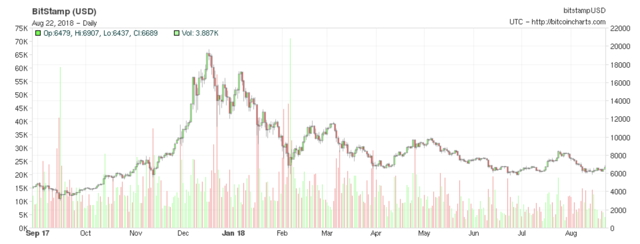
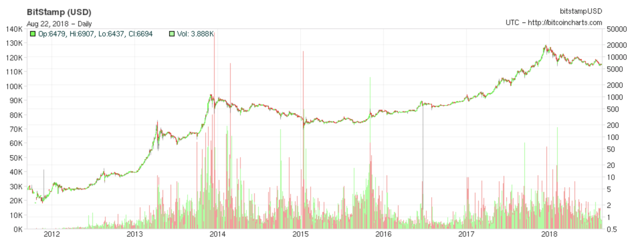
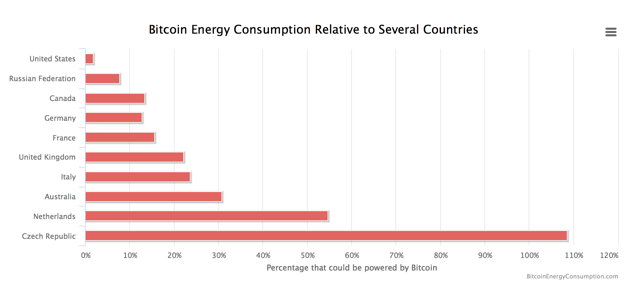
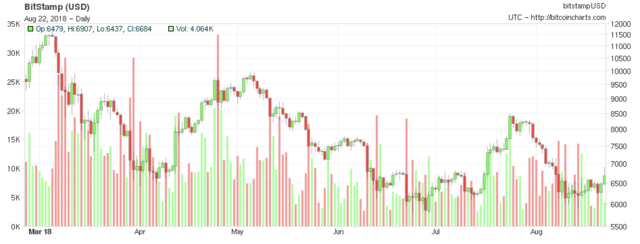
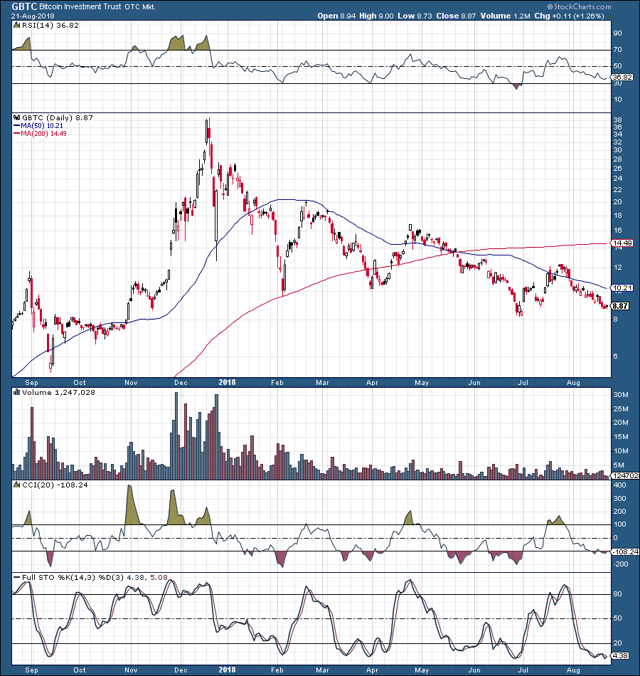
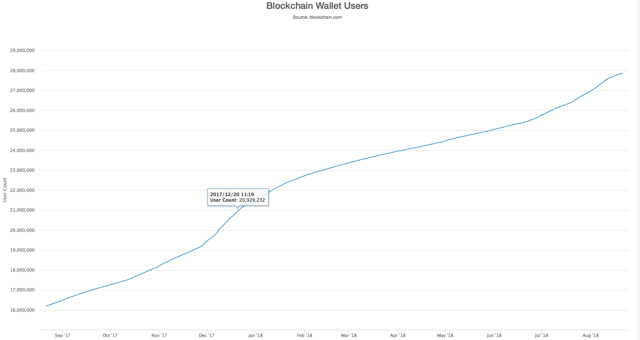

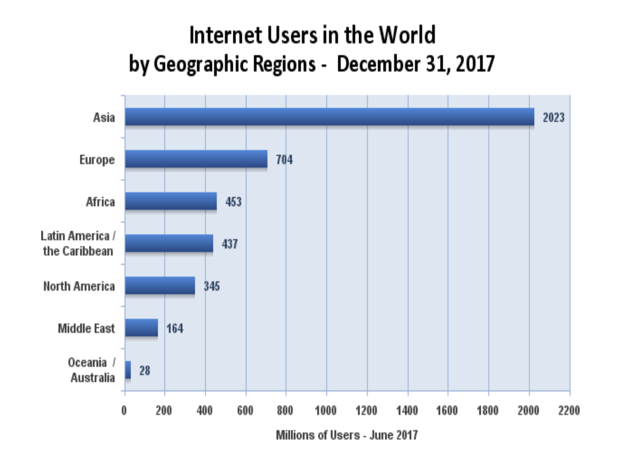
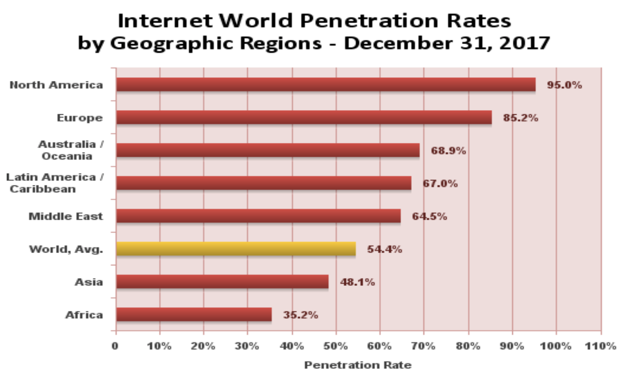
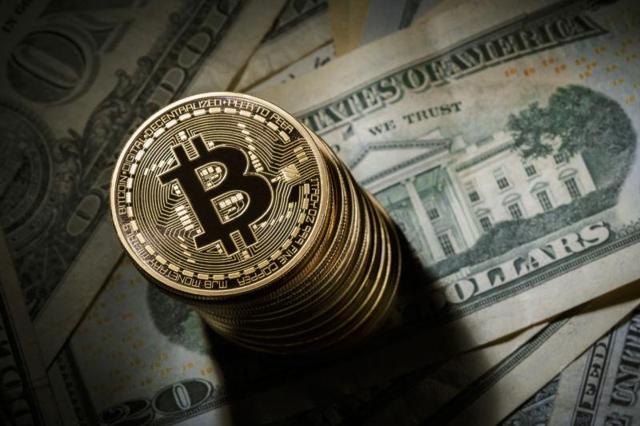

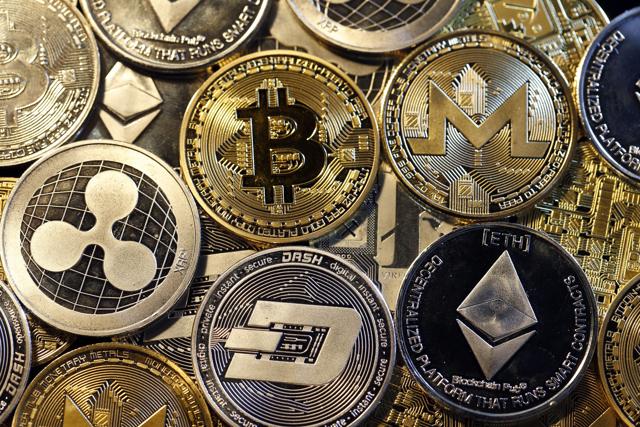
0 comments:
Publicar un comentario